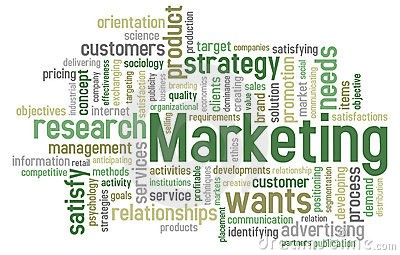The marketing strategy of the brands in the 21st century !
 The modern era is characterized by the increased use of technology and entrepreneurs are invited to adapt to the way in which their brands communicate with their buyers. In this context it is particularly important to know their interests, their habits and their preferences. A successful marketing strategy of a company in the 21st century must not aim simply to promote products. It should be crafted to develop and support a continuous two-way communication with consumers throughout the process of the purchasing decision.
The modern era is characterized by the increased use of technology and entrepreneurs are invited to adapt to the way in which their brands communicate with their buyers. In this context it is particularly important to know their interests, their habits and their preferences. A successful marketing strategy of a company in the 21st century must not aim simply to promote products. It should be crafted to develop and support a continuous two-way communication with consumers throughout the process of the purchasing decision.
In the past, businesses were planning their marketing strategies to sell their products / brands, without focusing on those customers that were important to them and to those activities that will make it more efficient. In particular consumers got informed for a commercial brand through media messages, recommendations from acquaintances and friends or from their own research, without necessarily wishing to buy. They then looked at the information they had gathered before making the purchase.
focusing on those customers that were important to them and to those activities that will make it more efficient. In particular consumers got informed for a commercial brand through media messages, recommendations from acquaintances and friends or from their own research, without necessarily wishing to buy. They then looked at the information they had gathered before making the purchase.
However, this approach is now anachronistic as modern marketing strategies focus on customers and their needs from the stage of the notification of a brand to the consumer’s experience after the sale. That’s because the customer is the one who shapes the reputation and image of a company and thus determines the success or failure.
Before buying a brand, customers search and gather details, reviews and recommendations from either the Internet or by visiting stores, while taking account of friends’ and relatives’ recommendations as well ads. It should also be noted that consumers today are quite familiar with the use of mobile devices and social media and through them they acquire early information about the products that interest them. They then evaluate them and finally make the purchase according to their needs and desires.
 Important role for customers’ future purchasing decisions and ability to attract potential buyers plays the experience they have after the purchase and use of product. Indeed, the more satisfactory is the experience, the more enhanced the image and identity of a commercial brand become, thus developing a stable and reliable customer base. Therefore, companies what they need is not only to sell, but mainly to create dedicated customers for their brands by providing a positive consumer experience throughout the course of the product life cycle. In this context, an effective marketing strategy should be based on the following actions:
Important role for customers’ future purchasing decisions and ability to attract potential buyers plays the experience they have after the purchase and use of product. Indeed, the more satisfactory is the experience, the more enhanced the image and identity of a commercial brand become, thus developing a stable and reliable customer base. Therefore, companies what they need is not only to sell, but mainly to create dedicated customers for their brands by providing a positive consumer experience throughout the course of the product life cycle. In this context, an effective marketing strategy should be based on the following actions:
In carrying out market research to identify the target groups or the best customers, their needs and expectations to be met by the products of a company as well as to map the existing competition. This includes:
– Gathering demographic data (age, education, income, employment, etc.)
– Communicate with customer service representatives
– Online research and social media on the perceptions that consumers have for business and its brand
These actions are important both at the stage of getting to know the prospective buyer with a commercial brand and during the formulation of the purchasing decision, as consumers choose those products that best relate to their lifestyle, they are qualitatively and meet as efficiently as possible their requirements.
brand and during the formulation of the purchasing decision, as consumers choose those products that best relate to their lifestyle, they are qualitatively and meet as efficiently as possible their requirements.
– Basic marketing strategy component is the creation of a pleasant environment in the store of the business which is achieved with the decoration so as to promote as much as possible and coherent image of the company, the practical and functional product packaging available and with the excellent customer service from the staff.
– It is necessary to ensure accessibility of products. This can refer to the search and choice of the most efficient distribution channels, the possibility for online shopping and the offers and discounts available.
These actions are particularly useful at the stage of making the purchasing decision as they can significantly  differentiate a brand from the rest, so that eventually be selected by the user. At a later stage, after selling products, key differentiating elements of a business are the following:
differentiate a brand from the rest, so that eventually be selected by the user. At a later stage, after selling products, key differentiating elements of a business are the following:
– Rationalisation of customer service and the ease and comfort in communication. A continuous and constructive dialogue with customers should be developed in order to  meet their demands and make them feel part of a community.
meet their demands and make them feel part of a community.
– The constant interaction with consumers. This can be achieved through the monitoring of the markets (through loyalty schemes) and proposals for new markets based on their recorded preferences. So companies develop emotional bonds with their customers, showing them that they are interested and want to communicate with them and after their purchase.
In conclusion, companies that put in the core of their marketing strategy customer loyalty by providing them with an overall positive consumer experience, will have a greater impact on the market and will continuously attract new buyers.
References : Verónica Maria Jarski (2015), Thomas Oppong (2015), Greg Gordon (2014), Jim Joseph (2013), Corinne Munchbach (2013), David Cooperstein (2012), www.marketing.about.com, www. yourbusiness.azcentral.com, www.dkconsultants.gr

